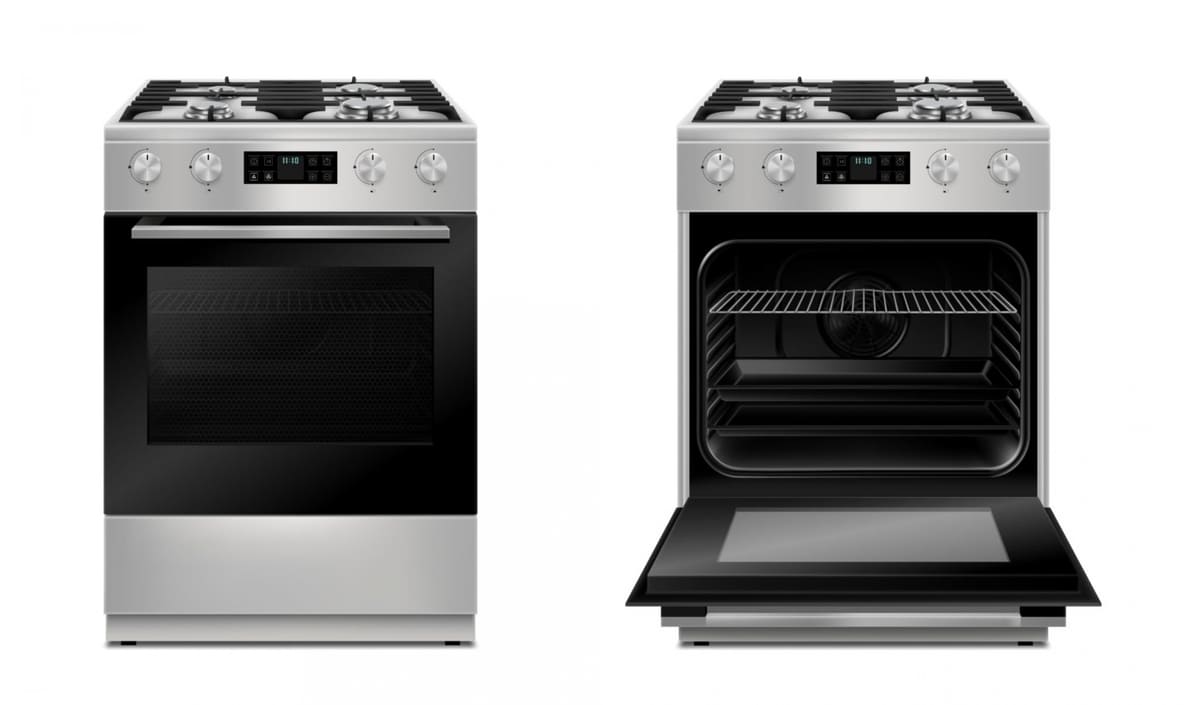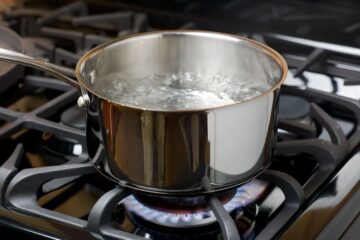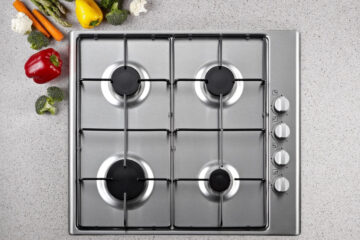When it comes to choosing between a gas and electric stove, there are several factors to consider. Both types of stoves have their advantages and disadvantages, and the decision ultimately comes down to personal preference. In this article, we will explore the differences between gas and electric stoves and help you make an informed decision on which one is right for you.
One of the biggest differences between gas and electric stoves is the way they heat up. Gas stoves use an open flame to heat the cookware, while electric stoves use a heating element. This can affect the way your food cooks, as gas stoves tend to heat up faster and offer more precise temperature control. On the other hand, electric stoves are generally easier to clean and maintain, and they tend to be more energy-efficient than gas stoves.
Cooking Performance
Gas and electric stoves have different cooking performances. In this section, we will discuss the performance of gas and electric stoves.
Gas Stove Performance
Gas stoves are preferred by many chefs because of their ease of temperature control. They offer instant heat and allow for quick adjustments in temperature. Gas stoves also tend to be better at maintaining a consistent low simmer, making them ideal for slow-cooking dishes such as stews and soups.
However, gas stoves may not be as good at baking as electric stoves. The heat distribution in gas ovens may not be as even as electric ovens, which can result in unevenly cooked food. Additionally, gas stoves may not be as efficient in conducting heat to your food, since a higher percentage of the heat actually dissipates in the process.
Electric Stove Performance
Electric stoves tend to heat up faster than gas stoves and have a narrow edge over gas when it comes to baking. They offer more even heat distribution, making them ideal for baking and roasting. Electric stoves also tend to be better at broiling.
However, electric stoves may not be as good at maintaining a low simmer as gas stoves. They may also take longer to cool down, which can make it difficult to adjust the temperature quickly.
Energy Efficiency
Gas and electric stoves differ in their energy efficiency. The efficiency of a stove is determined by how much heat is produced and how much of that heat is transferred to the cookware.
Gas Stove Efficiency
Gas stoves are generally more energy-efficient than electric stoves. They heat up quickly and the heat can be adjusted instantly, allowing for precise temperature control. Gas stoves also cool down quickly, reducing residual heat loss.
However, gas stoves can lose efficiency if the flame is not adjusted properly. A yellow flame indicates incomplete combustion, which wastes gas and reduces efficiency. It is recommended to adjust the flame to a blue color for optimal efficiency.
Electric Stove Efficiency
Electric stoves are less energy-efficient than gas stoves, as they take longer to heat up and cool down. However, electric stoves can be more efficient in terms of heat transfer, as they have flat, smooth surfaces that make full contact with the cookware.
Electric stoves also have a more consistent heat output, reducing the need for constant adjustments. However, electric stoves can lose efficiency if the cookware is not flat, as it will not make full contact with the heating element.
In terms of energy consumption, electric stoves can be more efficient if they are induction stoves. Induction stoves use electromagnetic energy to heat the cookware directly, without heating the surrounding air. This results in faster heating and less energy waste.
Safety
When it comes to safety, both gas and electric stoves have their own advantages and disadvantages. In this section, we will discuss the safety features of both types of stoves.
Gas Stove Safety
Gas stoves have been in use for decades and are known for their efficiency and quick heating. However, they also pose certain safety risks. One of the most significant risks associated with gas stoves is the potential for gas leaks. Gas leaks can lead to explosions and fires, which can be deadly.
To prevent gas leaks, it is important to ensure that the gas connections are properly installed and maintained. Additionally, it is recommended to install a gas detector in your kitchen that can detect any gas leaks and alert you immediately.
Another safety concern with gas stoves is the risk of burns. Gas stoves produce an open flame, which can be dangerous if not handled properly. To minimize the risk of burns, it is important to keep flammable materials away from the stove and use pot holders or oven mitts when handling hot pots and pans.
Electric Stove Safety
Electric stoves are generally considered safer than gas stoves. Since they don’t produce an open flame, there is no risk of gas leaks or explosions. Additionally, electric stoves are equipped with safety features such as automatic shut-off in case of overheating.
However, electric stoves also pose certain safety risks. One of the most significant risks associated with electric stoves is the potential for electric shock. To prevent electric shock, it is important to ensure that the stove is properly grounded and that the electrical connections are properly installed and maintained.
Another safety concern with electric stoves is the risk of burns. Electric stoves can become very hot, and if not handled properly, can cause burns. To minimize the risk of burns, it is important to use pot holders or oven mitts when handling hot pots and pans, and to keep flammable materials away from the stove.
Maintenance
When it comes to maintenance, both gas and electric stoves require some level of upkeep to ensure they continue functioning properly. Here are some tips for maintaining gas and electric stoves:
Gas Stove Maintenance
Gas stoves require regular cleaning and inspection to ensure they are safe to use. One of the most important things to do is to check the burners for clogs or debris that may prevent them from lighting correctly. If you notice any clogs, use a small wire or needle to clear them out. Additionally, make sure that the gas supply line is in good condition and that there are no leaks. If you suspect a gas leak, turn off the gas supply immediately and contact a professional to inspect the stove.
Another important aspect of gas stove maintenance is cleaning the burner grates and burner caps regularly. These can be removed and washed with warm, soapy water. Be sure to dry them thoroughly before replacing them. Finally, clean the stove’s exterior with a non-abrasive cleaner and a soft cloth.
Electric Stove Maintenance
Electric stoves are generally easier to maintain than gas stoves. One of the most important things to do is to keep the stove’s surface clean and free of debris. This can be done with a soft cloth and a non-abrasive cleaner. Additionally, make sure that the heating elements are in good condition and that there are no cracks or signs of damage. If you notice any damage, replace the heating element as soon as possible.
Another important aspect of electric stove maintenance is to check the control knobs regularly. Make sure that they are in good condition and that they turn smoothly. If you notice any stiffness or resistance, apply a small amount of lubricant to the knob and turn it several times to distribute the lubricant evenly.
Price
When it comes to choosing between a gas stove and an electric stove, price is an important factor to consider. In this section, we will compare the prices of gas and electric stoves.
Gas Stove Price
On average, gas stoves are slightly cheaper than electric stoves. According to Bob Vila, the price range for gas stoves is $460 to $2,300, while electric stoves range from $450 to $2,800. However, it is important to note that the cost of gas varies depending on the region, and natural gas is usually cheaper than electricity in most areas.
Electric Stove Price
Electric stoves have a wider price range than gas stoves, with some models costing more than $2,800. However, the most energy-efficient option is an induction cooktop, which can be more expensive than traditional electric stoves. While electric stoves may have a higher upfront cost, they are generally considered to be more cost-effective in the long run due to their energy efficiency.
When considering the price of a stove, it is important to also factor in the cost of installation and any necessary modifications to your kitchen. Gas stoves require a gas line connection, while electric stoves require a dedicated electrical circuit. These installation costs can add up quickly, so it is important to budget accordingly.
Conclusion
In conclusion, the decision between a gas or electric stove ultimately comes down to personal preference and specific needs. Both types of stoves have their pros and cons, which should be carefully considered before making a purchase.
Gas stoves are generally preferred by chefs and avid cooks due to their superior temperature control and faster heating times. They also tend to be more durable and require less maintenance than electric stoves. However, gas stoves can be more expensive to install and operate, and may not be as safe for households with young children or pets.
On the other hand, electric stoves are generally more affordable to install and operate, and are considered safer due to their lack of open flames. They also offer a smooth, flat cooktop surface that is easier to clean. However, electric stoves can take longer to heat up and may not offer the same level of temperature control as gas stoves.
Ultimately, the decision between a gas or electric stove will depend on individual needs and preferences. It is important to carefully consider all factors, including budget, safety concerns, and cooking habits, before making a purchase.



